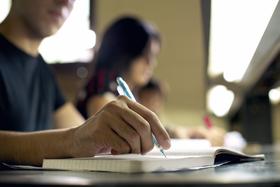For the 2025-26 school year, there are 5 public elementary schools serving 1,709 students in Jay School Corporation School District. This district's average elementary testing ranking is 7/10, which is in the top 50% of public elementary schools in Indiana.
Public Elementary Schools in Jay School Corporation School District have an average math proficiency score of 52% (versus the Indiana public elementary school average of 41%), and reading proficiency score of 40% (versus the 40% statewide average).
Minority enrollment is 11% of the student body (majority Hispanic), which is less than the Indiana public elementary school average of 37% (majority Hispanic and Black).
Overview
This School District
This State (IN)
# Schools
6 Schools
1,433 Schools
# Students
2,987 Students
662,155 Students
# Teachers
216 Teachers
44,024 Teachers
Student-Teacher Ratio
14:1
14:1
Student By Grade
District Rank
Jay School Corporation School District, which is ranked within the top 50% of all 389 school districts in Indiana (based off of combined math and reading proficiency testing data) for the 2022-2023 school year.
The school district's graduation rate of 84% has decreased from 87% over five school years.
Overall District Rank
#118 out of 395 school districts
(Top 30%)
(Top 30%)
Math Test Scores (% Proficient)
47%
39%
Reading/Language Arts Test Scores (% Proficient)
42%
41%
Science Test Scores (% Proficient)
32%
34%
Graduation Rate
84%
88%
Students by Ethnicity:
Diversity Score
0.20
0.57
% American Indian
n/a
n/a
% Asian
n/a
3%
% Hispanic
8%
14%
% Black
1%
14%
% White
89%
63%
% Hawaiian
n/a
n/a
% Two or more races
2%
6%
All Ethnic Groups
District Revenue and Spending
The revenue/student of $14,009 is higher than the state median of $13,184. The school district revenue/student has stayed relatively flat over four school years.
The school district's spending/student of $12,667 is less than the state median of $12,815. The school district spending/student has stayed relatively flat over four school years.
Total Revenue
$42 MM
$13,615 MM
Spending
$38 MM
$13,234 MM
Revenue / Student
$14,009
$13,184
Spending / Student
$12,667
$12,815
Best Jay School Corporation School District Public Elementary Schools (2025-26)
School
(Math and Reading Proficiency)
(Math and Reading Proficiency)
Location
Quick Facts
Rank: #11.
East Elementary School
(Math: 80-84% | Reading: 70-74% )
Rank:
Rank:
9/
Top 20%10
705 E Tallman St
Portland, IN 47371
(260) 726-9418
Portland, IN 47371
(260) 726-9418
Gr: K-2 | 399 students Student-teacher ratio: 13:1 Minority enrollment: 14%
Rank: #22.
Redkey Elementary School
(Math: 50-54% | Reading: 55-59%)
Rank:
Rank:
9/
Top 20%10
Box 6 W Main St
Redkey, IN 47373
(765) 369-2571
Redkey, IN 47373
(765) 369-2571
Gr: PK-6 | 254 students Student-teacher ratio: 10:1 Minority enrollment: 6%
Rank: #33.
Bloomfield Elementary School
(Math: 55-59% | Reading: 35-39%)
Rank:
Rank:
7/
Top 50%10
350 E 500 N
Bryant, IN 47326
(260) 726-9417
Bryant, IN 47326
(260) 726-9417
Gr: K-6 | 281 students Student-teacher ratio: 13:1 Minority enrollment: 4%
Rank: #44.
East Jay Elementary School
(Math: 52% | Reading: 41%)
Rank:
Rank:
7/
Top 50%10
225 E Water St
Portland, IN 47371
(260) 726-9371
Portland, IN 47371
(260) 726-9371
Gr: 3-6 | 532 students Student-teacher ratio: 14:1 Minority enrollment: 16%
Rank: #55.
West Jay Elementary School
(Math: 45-49% | Reading: 25-29%)
Rank:
Rank:
5/
Bottom 50%10
140 Highland Ave
Dunkirk, IN 47336
(765) 768-6075
Dunkirk, IN 47336
(765) 768-6075
Gr: K-6 | 243 students Student-teacher ratio: 12:1 Minority enrollment: 9%
Recent Articles

Public School Open House & Enrollment Season Guide
A parent-focused guide to the public school open house and enrollment season, with expert questions, timelines, and decision tips.

School Supply Budget 2026: Fees, Books, Tech Costs
School Supply Budget 2026 guide for parents, covering fees, textbooks, technology, and hidden extras to plan ahead.

Education Funding in America (2025 Update)
Comprehensive 2025 update on public school funding in America, new federal and state policies, per-pupil spending, and equity challenges.





